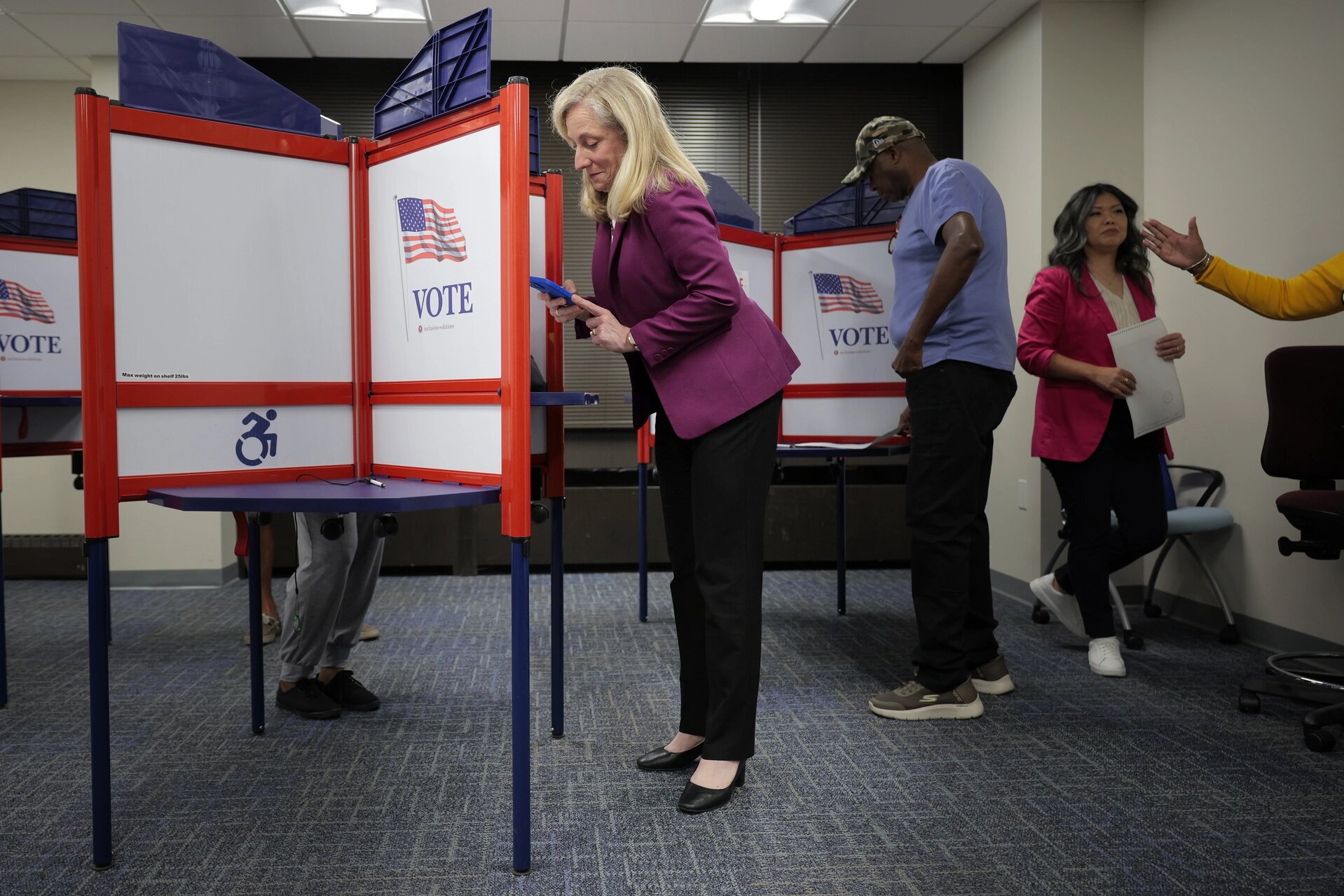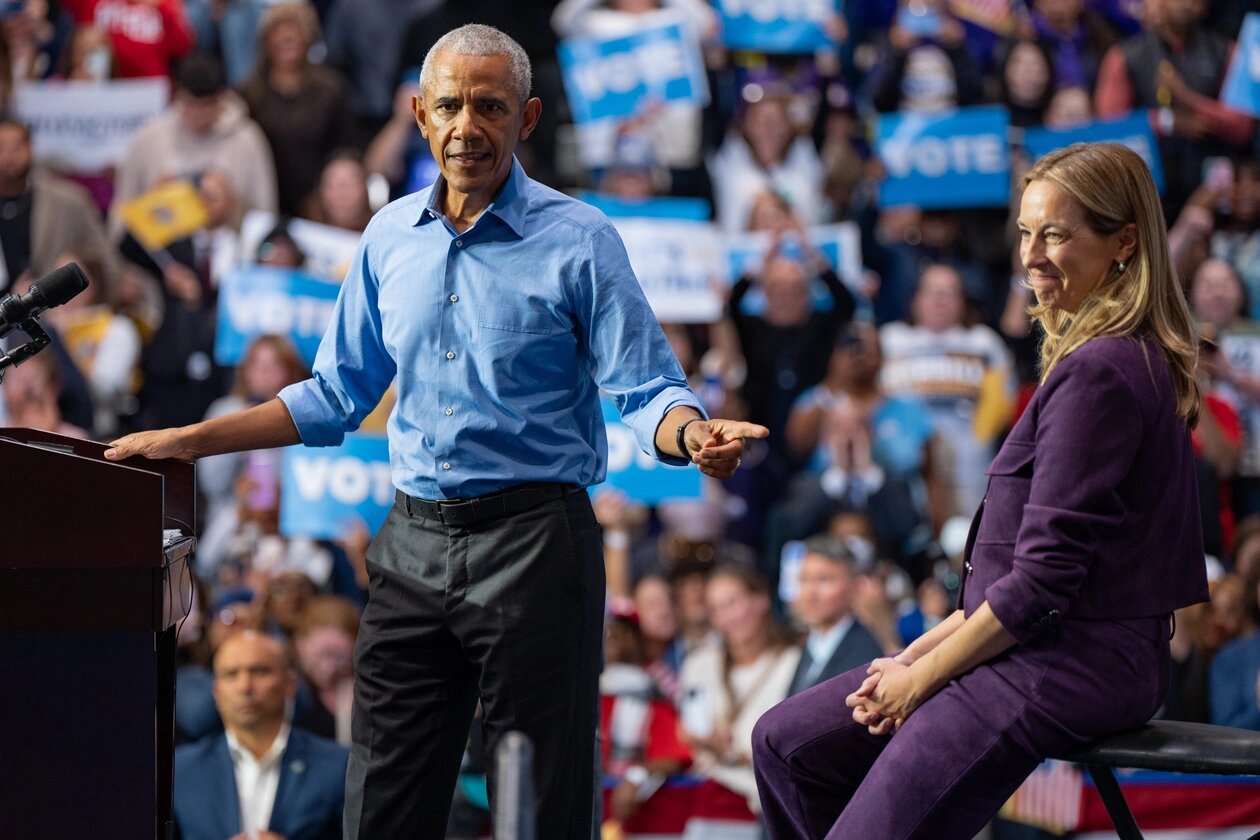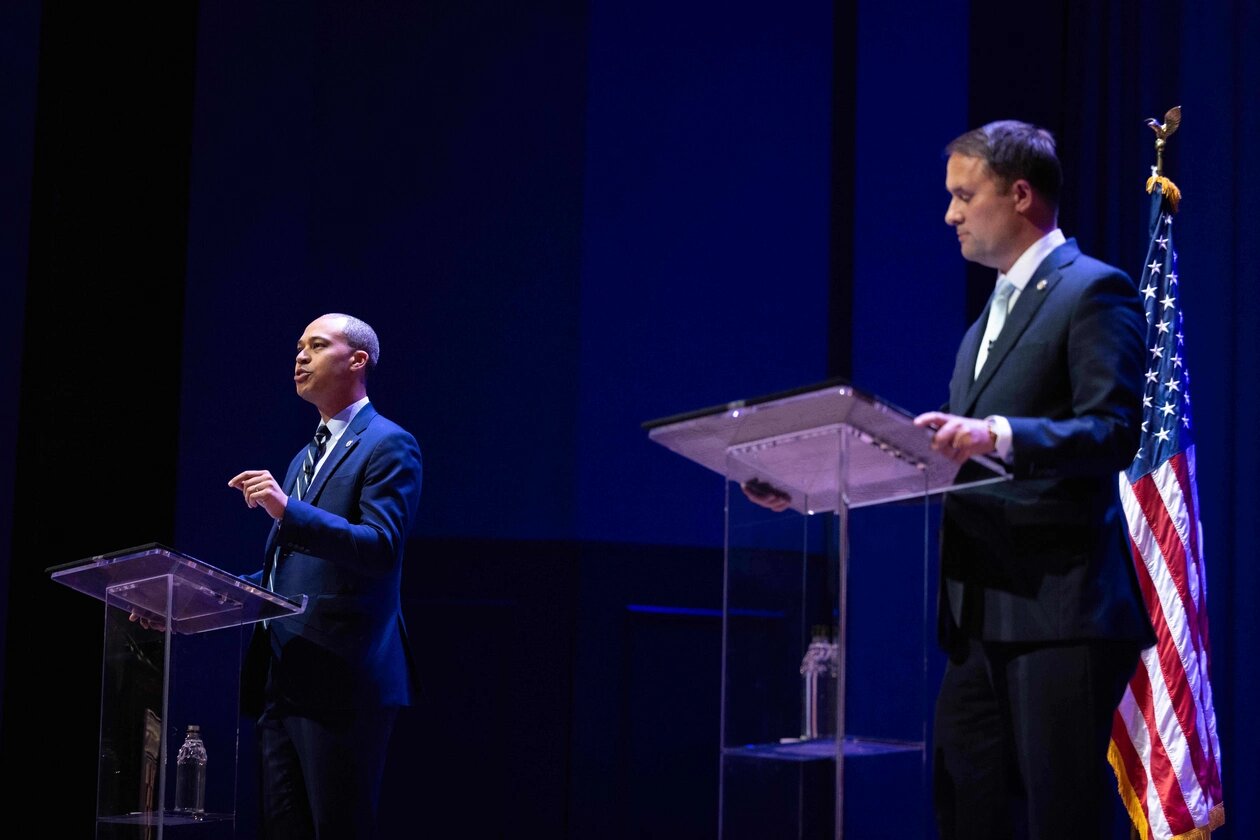They’re looking to Tuesday’s elections for clues about their future in Trump’s second term.

When voters head to the polls Tuesday, they will not just be picking a big-city mayor and two blue-state governors — they will be charting a course for the depleted Democratic Party.
And the margin of the expected victory will narrate the story.
Democrats are desperate to notch victories and emerge from their year in the political wilderness in their first major test of President Donald Trump’s second term. They’re betting on the strength of an economic message, pushed by two moderates with national security backgrounds who have hammered Trump on the trail, as well as the undisputed star of the cycle — democratic socialist Zohran Mamdani, who has rallied progressives and first-time voters, while worrying wealthy donors and business leaders.
All three are favored to win most in Tuesday’s grab bag of elections — governorships in Virginia and New Jersey, the Pennsylvania state Supreme court and a redistricting ballot measure in California. And in New York, Mamdani is on track to become the city’s next mayor, delivering a hero to the progressive movement and a villain to Republican ad-makers. The 34-year-old Mamdani also presents an inconvenience for mainstream Democrats, as they grapple with an uprising of young, progressive candidates at odds with their diagnosis of the party’s problems.
The races will offer a peek into the electorate’s mood one year into Trump’s second term, as most of the candidates have made the economy and the president’s failure to bring down prices central to their pitches. Inevitably, Tuesday’s results will be parsed for clues about Democrats’ standing with voters ahead of the 2026 midterms, as they look to regain a foothold in Washington after failing to capture the White House and either branch of Congress last year.
“It’s clearly an indication of what people are thinking about [Trump],” said former New Orleans Mayor Mitch Landrieu, who served as a senior adviser to then-President Joe Biden. “If the Republicans won even one of those [governor] races, they would say, ‘Oh, that’s a testament to the fact that everybody loves Donald Trump.’ I think the exact opposite is going to be true on Tuesday night.”
In 2024, Kamala Harris won Virginia and New Jersey, reliably blue states, by just 5 and 6 points respectively — underperforming Biden’s 2020 campaign. Improving that margin of victory Tuesday will give Democrats a much-needed morale boost, one that would likely draw the attention of donors, operatives and midterm candidates.
But mixed results — or tighter outcomes across the board — would likely throw Democrats back into internal recriminations over how to win during the second Trump era. The largely leaderless party is still arguing over how and why it lost its way a year ago.

Republicans are similarly obsessing over the margins. If Democratic nominees Mikie Sherrill in New Jersey and Abigail Spanberger in Virginia outperform Harris and “hit 55 percent, … Republicans really have to look in the mirror and say, ‘Here’s your preview. We have a year. How do you get the Trump coalition motivated and turned out to match the intensity of Democrats,’” said Robert Blizzard, a Republican pollster.
“That is usually the challenge in a midterm election, when the wind is in your face,” Blizzard continued. “If they don’t eclipse what Harris got in Virginia and New Jersey, I’d say the Democrats could be and should be growing concerned about 2026.”
Democrats leading the three marquee races — the pair of gubernatorial campaigns and the New York mayoral — span the ideological spectrum, but all zeroed in on lowering costs, underscoring how their party hopes to rehabilitate its reputation with voters. That approach dovetails with their ongoing strategy of tying the government shutdown solely to increasing health care costs.
Trevor Southerland, former executive director for the Virginia House Democratic caucus, said he hopes the results show Democrats that the base wants them to fight the Trump overreach, and that “it’s all about getting down to talking about the economy.”
Some Republicans privately echoed concern over the economy, with one pollster granted anonymity to speak freely warning, “voters sense a lack of focus, perhaps,” from Trump. “Voters want to see that he’s directly addressing costs.”
Demographic and geographic turnout will also illuminate trends forming ahead of the midterms, and a bipartisan mix of strategists shared what they’re tracking next week: Can Republicans pump turnout in rural areas without Trump on the ballot? Will Democrats expand their edge with college-educated suburban voters? Have Democrats arrested or reversed their eroding numbers with non-college educated voters of color — or do Republicans keep building with them?
While polls have been trending in Democrats favor, the party faces a tight race, in the Virginia attorney general contest, as political violence took center stage following leaked text messages from Democratic nominee Jay Jones. He’d been the clear front-runner until last month, when the released messages, first reported by the National Review, showed him wishing violence against his rivals. His opponent, incumbent Jason Miyares, seized on the opportunity to encourage split-ticket voting, while Spanberger disavowed the comments but declined to call for him to drop out of the race.

Even some Democrats are fretting about decisive victories, fearing the renewal would inspire cockiness ahead of the midterms, in which Democrats need to net three seats to retake the House amid current congressional maps, rather than forcing a party brand overhaul.
While all three candidates attended to the same voter concerns, they employed different styles. Spanberger and Sherrill, who served together in Congress as part of a class elected on anti-Trump resistance, ran moderate, traditional campaigns in states their nominee won by single digits — a sharp contrast to Mamdani’s social media-boosted insurgency in a city Harris dominated by nearly 40 points.
“Let’s say Spanberger wins by 12 or something huge — I think then the Democratic inner circles in D.C. and then spreading out across the country read into that as this is what works, this is what we should all be doing,” said Shaun Daniels, a Virginia political strategist. “And then you just send up a whole bunch of safe, antiseptic campaign messages, and we don’t find anything that actually works on a national level to define the party and help voters make decisions.”
It’s the reverse in New York, where Mamdani ran on a different playbook, cutting clever videos, castigating the party establishment and inspiring first-time voters. Republicans, who see Mamdani’s rise as a political liability for swing seat Democrats, are already working to turn him into a boogeyman for his party.
In the final days of the election, GOP congressional leaders harped on the democratic socialist’s views and tried to blame him for the four-week shutdown. The National Republican Congressional Committee declared in a strategy memo last week that “the Democratic Party has been hijacked by the radical left.”
While some national Democrats have avoided Mamdani, others are skeptical that the accusations will stick. For now they’re focusing their immediate attention on sweeping the statewide races. Former President Barack Obama is among the national figures to appear alongside Spanberger and Sherrill recently, joining them both at weekend rallies. Maryland Gov. Wes Moore showed up in four battleground state House districts on Saturday to help Democrats expand their majority in the state legislature, the highest profile surrogate for that level of the ballot.
“The rest of the country will be able to see that pendulums don’t creep, they swing — and I think that pendulum is going to swing back our way,” said Virginia House Speaker Don Scott.
Democrats, citing a string of special election overperformances this year, remain confident beyond Virginia and New Jersey.
In California, voters are expected to approve a redraw of the state’s congressional map that creates five Democratic seats, thanks to a well-funded campaign from Gov. Gavin Newsom. Newsom, a likely 2028 contender, cast the ballot initiative as a repudiation of Trump, who is ordering state lawmakers across the country to rejigger their own maps to advantage Republicans in the midterms.
And in Pennsylvania, Democrats are hoping to hold onto the state Supreme Court majority — another election framed in national terms, as Democrats argue for a bulwark against any GOP redistricting push should Republicans take statewide control. The highly popular Democratic Gov. Josh Shapiro is up for re-election next year, as is the state legislature.
And so Tuesday’s elections, albeit in different states for different offices, will offer a preview of 2026, said Jesse Ferguson, a Democratic strategist working on some races this year.
“If 2017 was the birth of the Resistance that fueled 2018, then this, in 2025, has the potential to be the election about betrayal, promises not kept, which is true in all these elections and could power 2026,” Ferguson said. “If 2017 was about fighting back, 2025 is about how people are getting screwed.”
